At a glance
My experience with retinoids and my tips to optimize the use of this effective but irritating anti-aging ingredient.
Now that the theory about retinol is out of the way, let’s move on to the practical side of things, shall we? In this article, I’ll tell you more about my experience with retinoids and I’ll also share some tips that have helped me to optimize their usage in my routine without messing up my skin!
Before getting to the heart of the matter, I would like to state things very clearly to avoid misunderstandings about what I’m about to share in this article.
In my first post, I mentioned prescription retinoids (adapalene and tretinoin) for information purposes only, but I’ve never used them myself. Therefore, I cannot give you any feedback about them. Not being a health professional, I don’t feel very comfortable talking about them. Really, I insist, regarding these two ingredients, it’s always better to ask your doctor’s advice!
For about 5 years now, I’ve been introducing retinoids into my skincare routine, but only cosmetics containing OTC ingredients, not the medical treatments.
I started to use retinol in 2016 because I felt that my skin was beginning to change.
I was 36, and my skin was already showing the first visible signs of aging: a lack of radiance, the first fine lines around the eyes, and on the nasolabial fold (= on the sides of the nose and near the mouth), my skin was less smooth, less firm with more visible pores. I also had a lot of hormonal acne at that time.
In short, retinol (or retinoids) seemed to check all the boxes to treat my skin needs at the time!
When I found out more about it, I quickly realized that it would be a game of patience with this ingredient and that I couldn’t be careless if I wanted results without messing up my skin in the process…
Obviously, it doesn’t mean that I became an absolute expert on this ingredient, and I didn’t make any beginner’s mistakes during those 5 years! Otherwise, it’s no fun, isn’t it? 😉
But I’ve been experimenting quite a bit with retinoids over the last few years, and I thought it might be interesting to tell you about my journey here!
I’m going to use this opportunity to give you a few tips that I’ve gathered in the course of these experiments. So if you decide to start using retinoids yourself, it might help you hopefully!
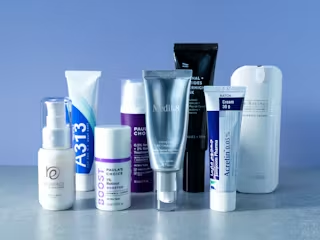 IngredientsFocus on: retinol
Over the past year or two, retinol made a huge comeback in our skin care products. And this is only the beginning, you can expect to be inundated in the coming months! This ingredient is supposed to be the most effective for a true, proven and recognized anti-aging action. But sometimes sensitizing, it can also frighten beginners. Let’s take a closer look at retinol, or rather the family of retinoids!
Read more
IngredientsFocus on: retinol
Over the past year or two, retinol made a huge comeback in our skin care products. And this is only the beginning, you can expect to be inundated in the coming months! This ingredient is supposed to be the most effective for a true, proven and recognized anti-aging action. But sometimes sensitizing, it can also frighten beginners. Let’s take a closer look at retinol, or rather the family of retinoids!
Read more
What are the questions you should ask yourself before starting retinoids?
For me, it’s important that you start by asking yourself a few questions when you decide to use retinol for the first time.
… retinol is a marathon, not a sprint.
1. What anti-aging results do you want to achieve?
If you want a more glowing complexion, less fine lines and wrinkles, more firmness, fewer pigmentation spots, less visible pores and textured skin… retinoids are indeed the right choice for you!
If you just want anti-aging prevention, in my opinion, there are plenty of very effective and less demanding ingredients that can do the trick. You can already start by applying a sun protection every day (the best thing you can do for your skin!), and also using some antioxidants, vitamin C, exfoliating acids…
2. Are you ready to accept that you must commit to a long-term journey?
If there’s one thing you should remember from this article, it’s this one: retinol is a marathon, not a sprint.
If you decide to start using retinoids, you need to know that you may need to get your skin used to retinoids gradually, and also that the results may not show up right away.
With retinol, patience is definitely the mother of all virtues!
3. Are you ready to use a sunscreen every day of the year?
If not, just forget about retinol and retinoids.
I’ve said it already, and I’ll say it again: retinoids are effective against the visible signs of aging caused by UV rays/sun.
So, it doesn’t make sense to keep exposing yourself to the same sun that makes you age faster with no protection, and consider using retinol to repair its damage! In addition, your skin can be sensitized by retinoids and burn faster if you expose it to the sun, so it’s definitely not a good idea to mix both without proper protection!
NB: if you are thinking about starting to use retinoids and you’re wondering what is the best time of year to do so, in my opinion, Fall is the best time of the year. The sunshine is less intense than in summer and the cold winter weather hasn’t set in yet so there are fewer sources of additional irritation for your skin.
Which retinoid is best, and for whom?
Once you’ve questioned and assessed your motivation, and still decide to start using retinoids, it’s time to make a choice!
Which product, and especially which retinoid to choose?
I have already mentioned the different ingredients in the retinoid family and their effects on the skin in my first article, but since a little reminder never does any harm…
Before detailing them, one important thing to remember, especially if you are new to this category of ingredients: the concentration of the retinoid must also be taken into account.
Ideally, it’s always better to start with lower percentages, which will certainly take a little longer to give you results but which will have the advantage of training your skin to handle this ingredient better.
Don’t forget that inflamed skin is not really the goal here… (inflammation will make you age faster anyway, so really, better to avoid it!).
Here are the different retinoids to look for in an ingredient list when selecting your product, ranked from the mildest to the most irritating:
– Retinyl propionate:
The most effective retinol ester. In small quantities, it works well for sensitive skin. In large amounts (5% or more), it could, according to some studies, produce results comparable to retinol (but they will take longer to obtain). In both cases, it’s an interesting ingredient for beginners!
– Hydroxypinacolone retinoate (HPR or Granactive Retinoid):
A relatively new retinoic acid ester. Although its potency is supposed to be comparable to a prescription retinoid, it produces little or no irritation. At a low concentration (2% or less), it’s suitable for retinoid beginners (if your skin is very sensitive, retinol esters may be more appropriate, though). They’re also available in higher concentrations (5%) if you want better and quicker results and if your skin is already used to this ingredient.
– Retinol:
The most common over-the-counter retinoid in cosmetics. For beginners (especially if you have sensitive skin), it’s better to start at 0.1%. Once you’ve reached a good tolerance, you can switch to a concentration of 0.3, 0.5 or 1% for better and quicker results.
– Retinyl retinoate (r-Retinoate):
Another kind of new generation retinoic acid ester. It’s supposed to be eight times more potent than retinol, with less irritation (beware, there can still be irritation!). IMO, it remains a product for experienced retinol users. I wouldn’t recommend it for a first experience with retinoids.
– Retinaldehyde (or retinal):
The direct precursor of retinoic acid, about 20 times more potent than retinol. The concentration is usually between 0.01% and 0.1%, and it’s supposed to be less irritating than retinol. Be careful, it doesn’t mean it’s suitable for beginners! It’s intended more for experienced retinol users, and can still cause some dryness and skin irritation.
To clarify things for you if you’re a beginner, I’ve summarized these infos below in a table (of course, this table is not very nuanced because it also depends on your skin’s sensitivity, application rhythm, etc… but nuances don’t mix well with a table lol):
| Retinoid | Concentration | Works for beginners? | Product examples |
| retinyl propionate (retinol ester) | Less than 5% | Yes | A313 Pommade Vitamine A |
| retinyl propionate (retinol ester) | Over 5 % | Yes | Shani Darden Retinol Reform |
| hydroxypinacolone retinoate (HPR or Granactive Retinoid) | 2% or less | Yes | The Ordinary Granactive Retinoid 2% Emulsion |
| hydroxypinacolone retinoate (HPR ou Granactive Retinoid) | 5% | No | The Ordinary Granactive Retinoid 5% in Squalane |
| retinol | 0.1% | Yes | Paula’s Choice Clinical Ceramide-Enriched Firming Moisturizer |
| retinol | From 0.3% to 1% | No | Paula’s Choice 0.3% Retinol + 2% Bakuchiol Treatment, Paula’s Choice 1% Retinol Booster |
| retinyl retinoate (r-Retinoate) | Unknown | No | Medik8 r-Retinoate Cream |
| retinaldéhyde (or retinal) | From 0.1% to 1% | No | Medik8 Crystal Retinal |
NB: I intentionally left aside adapalene and tretinoin because these are not available over the counter and require a doctor’s prescription.
I mentioned it briefly in my first article, but if you have very sensitive skin and/or are afraid of retinoids, you can also try bakuchiol, a plant-based alternative known to be less irritating than retinoids. Regarding the results, there is not much hindsight for the moment because its use is very recent, but many people think that this ingredient has some potential…
The retinoid products I tried:
As a reminder, I have dehydrated combination skin, and it’s not especially sensitive.
So, in chronological order, these are the products I’ve used:
The very first retinoid that caught my attention and that I wanted to test because in 2016, it was really an innovative product! I think it’s one of the very first products available on the market with HPR. Moreover, it was blue (because of the dyes; I learned it later on 😑) and it smelled good (because of the essential oils, which, in this type of products, I prefer to avoid nowadays).
I liked it at the time and even talked about it on my first blog (my review of Luna on bonnie-garner.com/en). I used it while I have it (it lasted a few months) and I didn’t repurchase it because of the price tag.
I loved this product, I used it during all 2017 and part of 2018 (I must have emptied 4 or 5 bottles).
I found it effective on the radiance of my complexion and it helped to smooth my pores, and my skin texture. I had no irritation with it and I used it every day without issue.
I heard so much about this product (it had such much hype on American blogs and social media in 2018) that I wanted to try it. Plus, the combination of 5% retinyl propionate and 5% lactic acid was intriguing!
I found it really effective for smoothing my skin (the addition of lactic acid had a lot to do with it, I guess), and it wasn’t too irritating on me. But its price dissuaded me from repurchasing it. I used it for almost 6 months (3 or 4 times a week).
In January 2019, Drunk Elephant released its retinol cream and like an idiot, I jumped on it right away! Not only was the 1% retinol concentration too high for my skin (I should have started at 0.3%) but IMO, this cream is just awful and very irritating.
I pushed through for 4 months (very bad idea). Even if I applied it only twice a week, my skin was dry, red, with small irritation pimples the whole time I used it. After a while, I finally figured out that it might not be a normal reaction (I was really slow to understand that one lol) and I finally stopped it!
I then had to put my skin on rehab for a month (no retinoids, no acids, no vitamin C) so my skin barrier could repair itself…
Then, I decided that I wasn’t going back to a super low percentage of retinol (which was dumb BTW, if I had to do it all over again, I would probably aim for a 0.3% retinol product) and I wanted to try the Paula’s Choice Booster 1% Retinol. Luckily for me, Paula’s Choice products are very well done… And apparently, I somehow managed to get my skin used to retinol so I tolerated this product very well!
I took it easy, and gradually increased the frequency, from once a week to almost every day, without any worries!
Regarding the results, after a few months, random people started complimenting my skin! It was much clearer, glowy, smoother too… In short, I used it for about 6 months and enjoyed it very much (I love its very light texture, too). Frankly, I could have continued to use it for longer but…
At the end of 2019, my curiosity got the best of me and I decided to try retinal, an ingredient which intrigued me a lot! I didn’t take any risks (it’s a relatively new ingredient), and I ordered it from Medik8, a British brand known for being innovative and serious about its formulas.
I started with the Crystal Retinal 6 Serum, which maintained the good results I achieved with the 1% Retinol Booster Serum from Paula’s Choice, with the added bonus of a little purifying effect on my remaining acne! After 2 or 3 months, I had significantly fewer breakouts. Well, I don’t have a lot of them at my age, but now I hardly ever get any, even at that time of the month.
For the last 2 months, I switched to Crystal Retinal 10 serum which is a little more irritating, I can feel it especially when I try to use my exfoliating acids (I had to seriously slow down on that side). But I’m taking it easy (I don’t apply it every night yet) and so far so good!
Last year, I bought this cream out of curiosity during a trip to France (it’s quite cheap there), but its super oily texture discouraged me from using it on my face. I’ve been using it on my hands for a few months now and I like its repairing action, especially for my very dry hands! As for the anti-aging results, however, I’m not convinced…
Edit 30/09/2022:
I also did a review of the Paula’s Choice Clinical 1% Retinol Treatment 🙂
How to build your resistance to retinoids:
I mentioned it in my first article, but irritation with retinoids is not something you should expect. Nor is it proof that your product works better. It can be prevented, and you can totally use retinoids without going through a phase where the skin is irritated, red and peeling (or at least, diminish it a lot!).
During my years of using different retinoid derivatives, I’ve been able to experiment with several techniques to help my skin tolerate this family of ingredients better.
Indeed, there are several possible strategies to help your skin get used to this ingredient with little or no side effects.
…the results take time and must be earned!
1. Start with softer retinoids:
If you’re starting with these types of ingredients again, there is no point (and I would recommend not) to start with a stronger retinoid and hope to get more/better results.
With retinol, it doesn’t work like that! You just risk irritating your skin and therefore, you won’t be able to use the product enough to obtain any conclusive results.
Know the Nike slogan, “Just Do It”? Well, with retinol, it would be “Just Don’t Overdo It!” (thank you Colbert at The Late Show for inspiring this high quality joke! 😉)
I’ve said it before, but at the beginning, you have to be aware that this ingredient is very effective, yes, it’s proven, but the results take time and must be earned!
So planning to use gentler retinoid derivatives such as retinol esters or HPR first to get your skin used to this ingredient is really a strategy that pays off in the long run. Even if you don’t have sensitive skin!
Now drop that bottle of 1% retinol you bought and go get that gentle 0.1% retinol instead! 😂😂😂
2. Increase the rate of application gradually:
Similarly, you shouldn’t use retinoids every day at first either.
The key word here is “gradually“.
This means that you can start to apply it two evenings a week at the beginning (or even just once if you have sensitive skin and/or you’re scared) during the first two weeks.
Then for the next two weeks, you can try three evenings a week.
The following two weeks, four evenings. And you can increase gradually, in 2-week steps, until you can apply it every night.
And during this process is the time to really listen to your skin.
If it shows the slightest sign of discomfort, dryness, tightness, redness… don’t hesitate to step back! You can totally slow down if you feel it’s too much for you. Applying every night is not the ultimate goal here!
What matters with retinol is the consistency of your application, not necessarily the frequency. The frequency will just allow you to get faster results. But as stated before, retinol is not a sprint. What matters most is that you can continue to use it without any skin discomfort.
Results will show, sooner or later. 🙂
3. Gradually increase the amount of product used:
Finally, the amount of product is also important, especially in the beginning! “Less is more” is really the approach you want with retinoids.
No need to use a big amount of product on your face, unless your goal is to irritate it as much as possible!
A pea size amount is enough at first. It is a potent product, so no need to use too much (visually, it’s the equivalent of half a fingertip).
It’s also very important to apply it correctly on your face, with an even layer of product. You also want to avoid sensitive areas such as the eye contour, the sides of the nose or the mouth contour (check out Dr. Sam Bunting’s 13 dots technique on YouTube for an effective and safe application of retinol).
When is the best time to use retinoids in your skincare routine?
For me, as a devoted long and complex skincare routine lover, this question has been bothering me for quite a long time!
I’ve tried a lot of different approaches: right after cleansing on dry skin, after my essences and serums, after my nourishing facial oil, on top of my moisturizer…
…the more hydration, the better with retinol!
And in the end, I don’t think it matters that much… What’s important, once again, is that your skin is comfortable. And applying retinol on top of other products won’t diminish its effectiveness, it will simply slow down its absorption into your skin.
Concretely, this means that it will be just as effective but gentler!
Personally, my preference is to apply it at the end of my routine, after my nourishing product (either my facial oil or my moisturizer).
And what I really like to do at the moment is to let my retinoid product sink in after I applied it, for 20-30 minutes, and then reapply either a second layer of night cream or a soothing night mask! (the LANEIGE or the Dr Jart + are perfect!).
The more hydration, the better with retinol!
What are the best products to use with retinol for a better tolerance?
Speaking of moisturizer, chances are that with the use of retinol, your usual products may not be nourishing enough!
Despite all the precautions mentioned above, retinoids dry out the skin over time.
So for me, the survival kit if you use retinoids must include:
– a gentle, non-foaming cleanser:
To avoid stripping your skin even more, you can use gentle formulas that respect the skin’s barrier such as Paula’s Choice Resist Optimal Results Hydrating Cleanser, or CeraVe Moisturizing Cleansing Cream (or the ones I talk about in my How to cleanse your skin properly article).
– a more emollient night cream:
No matter what your skin type is, a nice and rich night cream can really help you better tolerate retinoids!
A few examples: Klairs Midnight Blue Calming Cream, which I reviewed, and one that I really like and will tell you more about soon, the Paula’s Choice Omega + Complex.
– And of course, a sunscreen to apply every morning!
I suggest you to go read my articles on the topic if you’re looking for products recommendation 😉 (the latest one is my 2019 sunscreen guide).
What are the best ingredients to pair with retinoids in your routine?
All the moisturizing, nourishing, repairing and soothing ingredients will be your best allies to pair with retinoids!
Here are a few examples:
If you’re looking for inspiration, here are all the products I mentioned that contain ingredients that are perfect to pair with retinoids:
product reviews for sensitized skin
What are the ingredients to avoid with retinoids in your routine?
Especially when you are new to retinoids, it’s probably best to avoid combining them with other ingredients that may be too sensitizing.
So at least for the first few weeks (or even months), it’s best to stop:
- exfoliating acids (AHA, BHA),
- vitamin C/ L-Ascorbic acid,
- facial scrubs (in any case, these, you should stop them anyway IMO 😜).
If your skin has gotten used to your retinol product, you can try to reintroduce them slowly afterwards (not the scrubs! 💩), but here again, take it easy, maybe now is not the best time to apply your 30% AHA exfoliating peeling!
How can you tell if you’re ready to transition to a more powerful retinoid?
If your skin is now used to your retinoid product and you can apply it daily (or several times a week) feeling no irritation, it’s better to keep using it for at least 6 months to get optimal results!
But if after those 6 months you feel that you have reached the highest level of results with this product, then you may want to consider moving up to a higher concentration or a more powerful ingredient!
Caution remains the key to success with this ingredient…
Once again, it’s best that you don’t get overexcited, and pretend like you’re new to retinoids when you introduce a new product into your routine!
Basically, this means stopping the sensitizing ingredients for the first few weeks, starting with an application 2 evenings a week at first, and increasing the rhythm very gradually, in two-week steps!
Caution remains the key to success with this ingredient, whether you’re a beginner or an expert! 😉
How long does it take with retinoids to see results?
A long time! At least 3 months, but personally, I’ve really seen a difference on my skin after 2 years of regular use of retinoids.
It takes patience, clearly, but personally, I think it’s worth it!
My complexion is now much clearer, more radiant, my pores are less visible, and my skin feels also denser and smoother than before, in my opinion.
Of course, it’s not a miracle ingredient (they don’t exist!) and when I talk about visible anti-aging results, it is important to keep reasonable expectations! But I’ve clearly seen an improvement in my skin and the fact that I’ve been getting more and more compliments about my skin over the last few years proves to me that it’s not just in my head 😉
In conclusion:
If I have to evaluate my experience with retinoids over the past five years, I would say that I’ve been pretty pleased with them.
I still managed to avoid irritation most of the time (except with the Drunk Elephant cream, but clearly, I think it has something to do with the product’s formula given all the bad reviews I’ve read and seen about it).
As for results, I know that I’m not at the peak of what retinoids can do (I haven’t tried the medical version of this ingredient) but I still find that the difference is visible on my skin. Clearly, it looks better than it did 5 years ago, even though I have been aging for 5 years!
I’m not saying I won’t try the medical treatment versions in the future and I think there’s a high possibility it’ll go as smoothly as possible since I’ve been preparing my skin for years (it’s called positive thinking, let a girl dream 😂).
But for now, I’m happy with over-the-counter retinoids. The formulas of the products I’m trying are interesting and I also have the option to keep using my other favourite anti-aging actives (vitamin C, exfoliating acids) in the same routine, which wouldn’t necessarily be the case with tretinoin…
I’m a beauty addict, not a skincare routine minimalist 😜.
In short, I appreciate the “comfort” and “versatility” of over-the-counter retinoids compared to tretinoin (yes, the quotation marks here are essential, you’ve understood that everything depends on where you are in your own retinoids journey!)
In any case, I hope this article and my first article about the theory of retinoids were useful and helped you to get a clearer picture of this fascinating but a bit intimidating ingredient!
I will probably continue to talk about retinoids here on BTY ALY, but probably with more product reviews in the future! 🙂
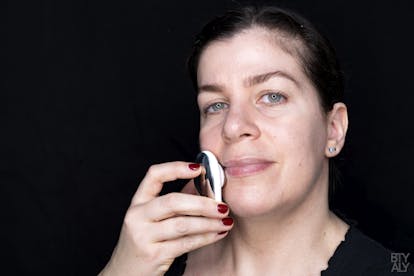
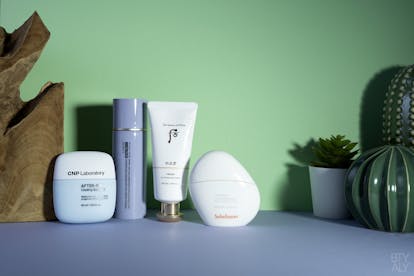
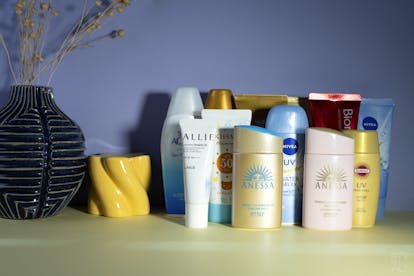
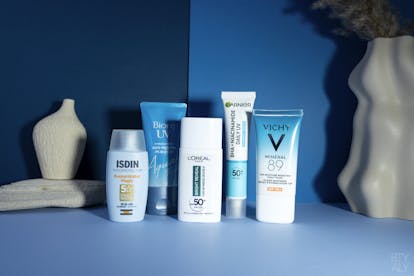
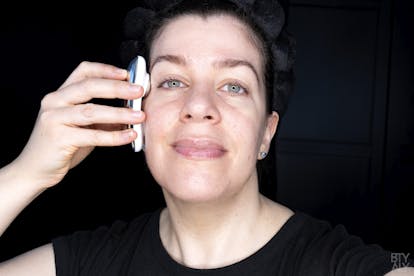
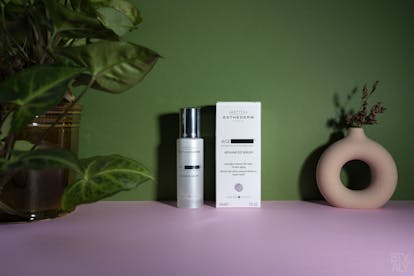
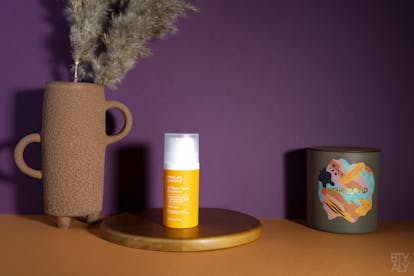
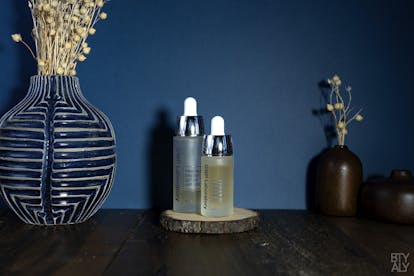
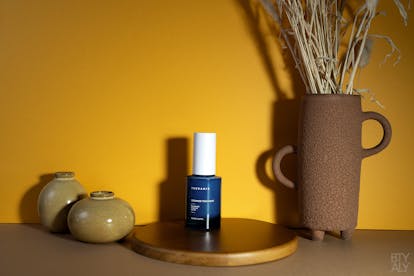
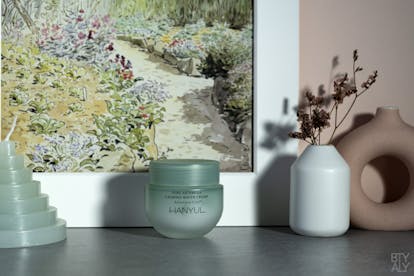
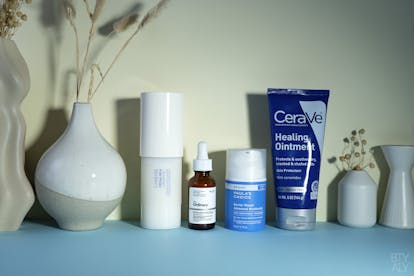
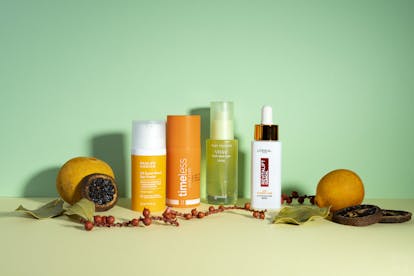
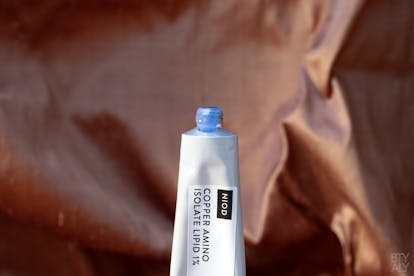
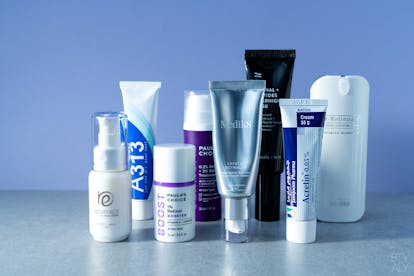
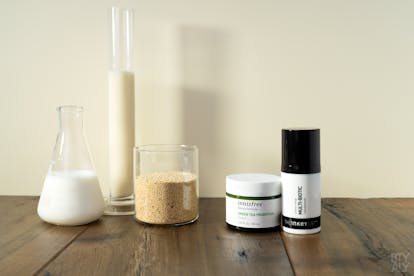
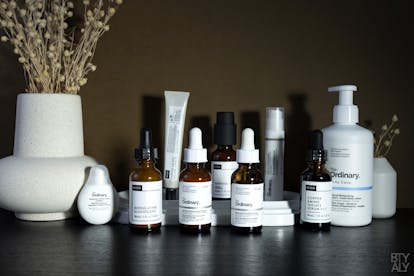
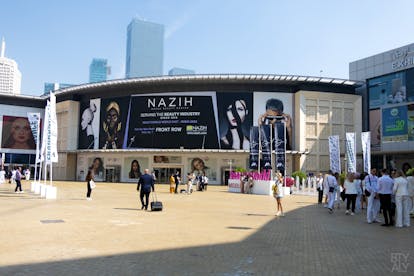
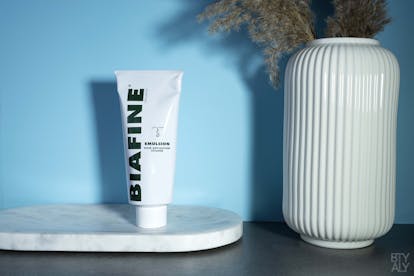
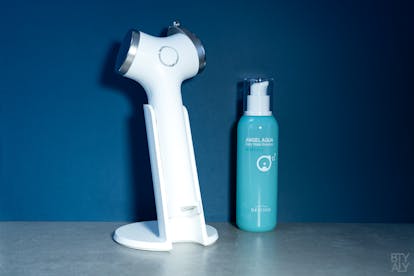
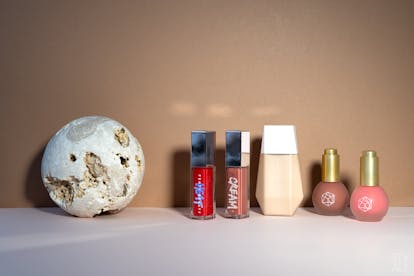
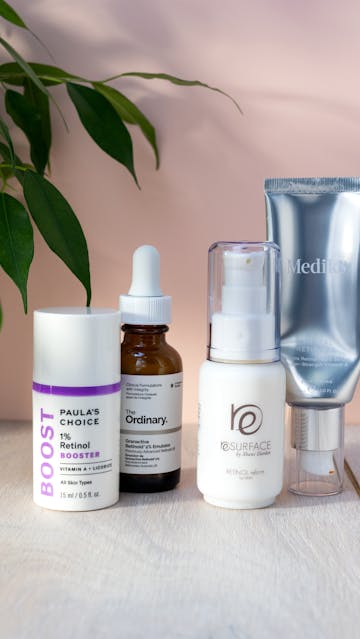

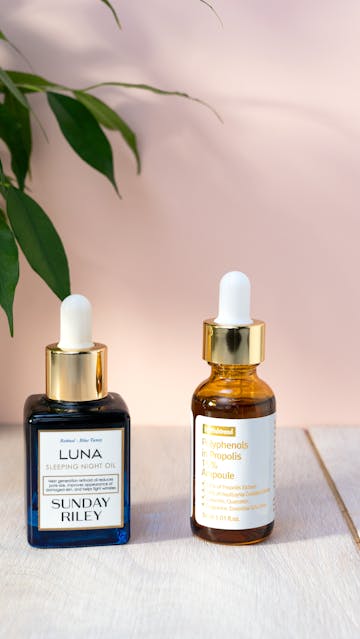
 Newsletter
Newsletter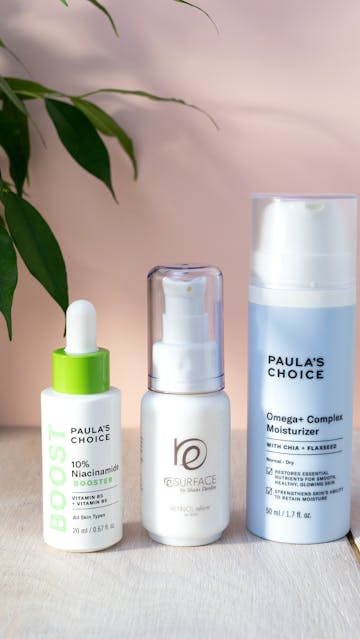
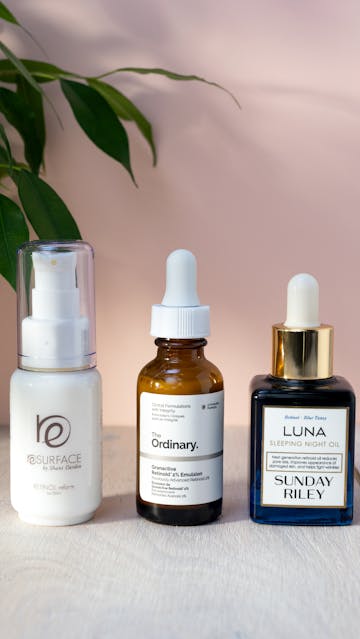
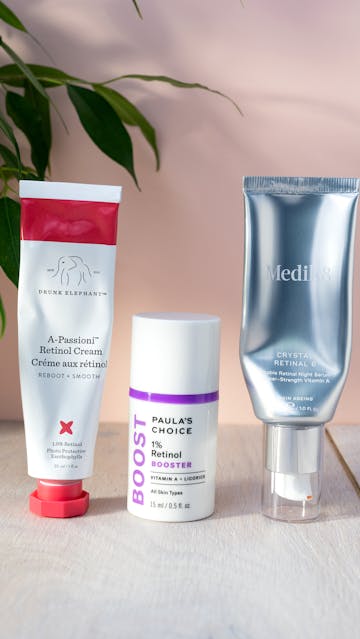
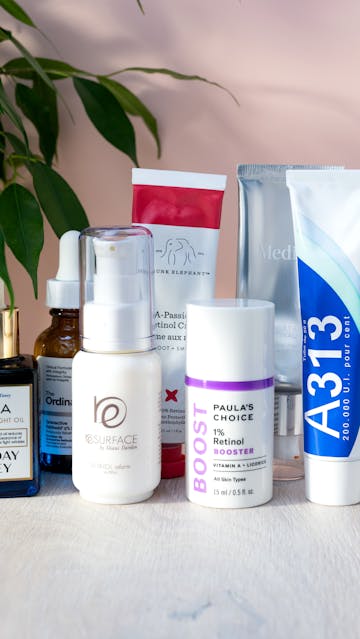
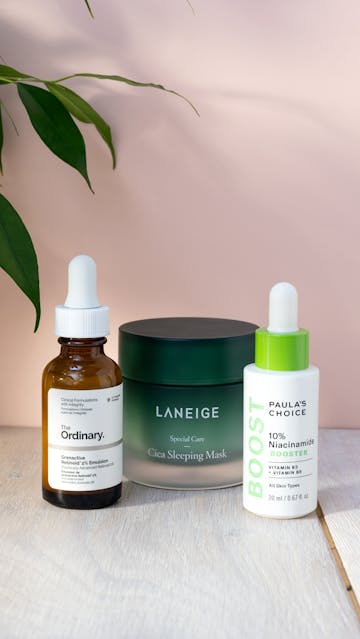
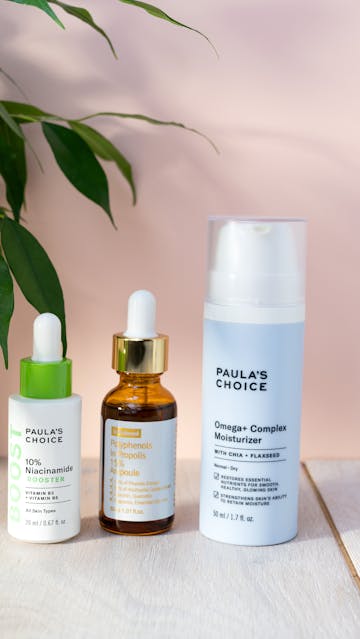
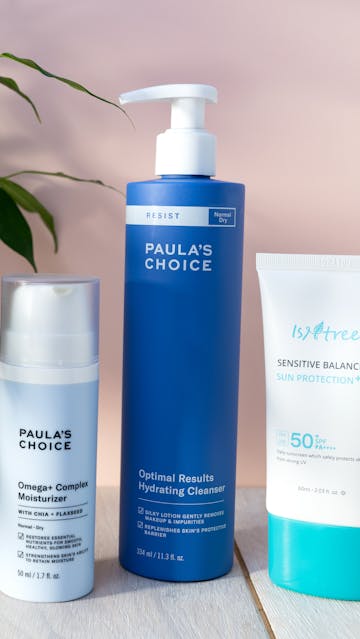
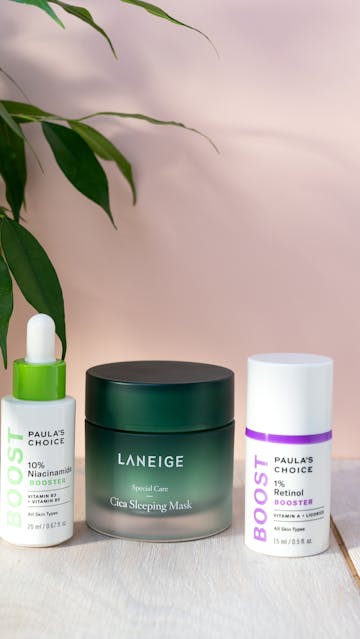
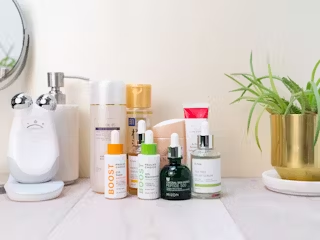
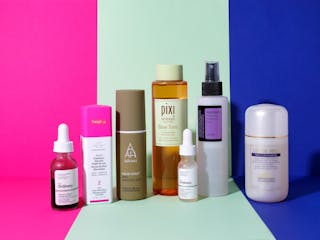
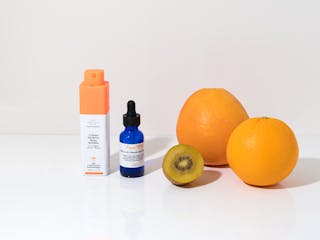
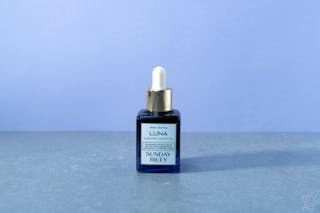
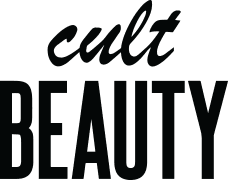
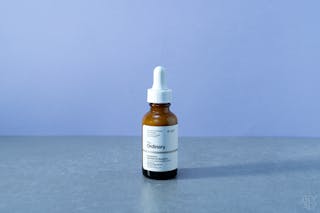
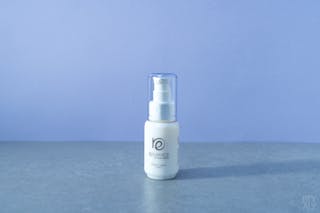
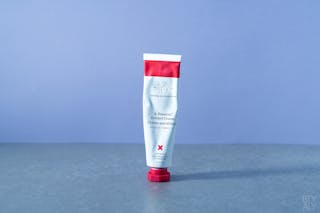
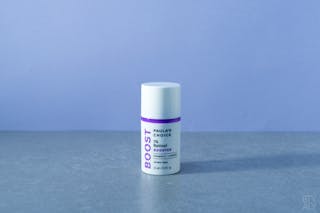

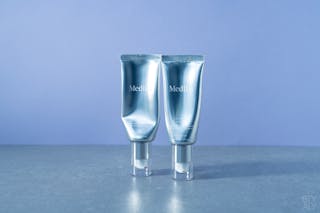

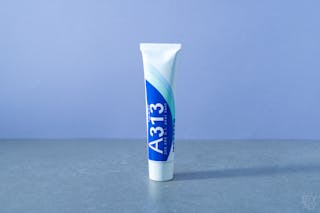










Excellent review, I had carried out cabin treatments on my skin, such as phenol peeling and others … and in my routines I had already introduced acids, vitamin C, exfoliants, etc., that’s why I learned about retinol and its wonderful promises through some yotubers that I followed, and these directly used the prescription retirid cream, but here in my country Spain, it can be bought without a prescription, so my first time in retinol was with this retirid cream and to a greater degree than 0.1 % If I did so, it was because I said I considered my skin accustomed, and the craving could live. I did not get any type of excessive peeling, only a little in some areas, but not like a lizard … my skin reacted with some grain (something that sometimes still happens to me), but if I had dryness, tightness, … I think I put too much and it caused irritation, so I stopped, and started again when I finished this state of my skin, putting less quantity then.
Of course I always use SPF50 in my morning routines, I use it 4 days a week, Friday break, and in my nocturnal routines is the propolis niacinamide serum, and creams like calendula that provide me with a lot of hydration. Saturday I usually exfoliate and mask and a lot of hydration and Sunday a lot of hydration. Monday I go back to retinol. All the time I used my retinol, I applied it alone, after my double cleaning, of course with a mild detox soap, in my case I like foam ones. I used it that way because the yotubers I discovered and started with retinol, said to apply it without any product before or after. But for a few weeks now, I have been putting my niacinamide serum before, I let 30 minutes pass and I apply the retirides. The truth is that I have noticed that my skin is as if it suffered less. That is why I liked reading in your review, that you also do it that way and that there is no problem, that it does not diminish the effectiveness of retinol. And also that after a while you reapply, your cream again, maybe it will encourage me to do it, if it does not reduce effectiveness.
I have to tell you that I have not collected acids or scrubs in my night routine, but if I have applied vitamin C the next morning, I have not noticed anything wrong with my skin when doing it, of course after I have cleaned my skin, I also include resveratrol and a few drops of vitamin E.
My cream is about to finish and I had thought not to repeat and use a retinol serum, like Paula’s, which quality price is within my possibilities and I had also thought of La Roche Posay retinol B3 serum, which I have read very good reviews. My question is, if I have already used a much more powerful retinol as my 0.1% cream, will I still notice effects and is it a good decision?
I congratulate you on your way of posting, although I have to use the translator, it is totally understandable and the reviews are very professional, as well as clear, and very visual. Thank you, I hope that everything is good in terms of health, the damn virus … Greetings from Valencia, Spain
Hi Belinda!
I’m doing well, thanks for asking! I hope you’re well and safe! ❤️❤️❤️
Thank you so much for your kind words, I really appreciate! 😀
I really like your way of applying your retinol, it makes a lot of sense to do a week-end break with acids exfoliation. I’m doing it that too at the moment!
Regarding your question, I think that if your skin doesn’t feel too sensitized by your tretinoin cream, you’ll probably see more results if you keep on using it (maybe you can even ask your doctor to increase the percentage?). Because your skin is already used to this stronger ingredient, I’m not sure you’ll see as much results with a OTC retinol 🤔
Stay safe and take care 🙂
Hello!
I would like to ask if I can go from Drunk Elephant A Passioni straight to Medik8 Crystal Retinal 10. My skin can tolerate A Passioni so well that I have accidentally used an AHA before my DE Retinol without any irritation whatsoever.
Thank you in advance
Hello 🙂
You should be fine IMO!
Of course, it’s better if you introduce it slowly to limit the irritation as much as possible 😉
Hi, I use the medi8 crystal retinal 6 as well as the Ordinary Niacinamide in my night routine but I’m not sure I’m layering them correctly, should I use the retinal first then layer the niacinamide on top, or it should be the reverse, Niacinamide and then Retinal. Please let me know. Thanks
Hi Stella!
To be honest, I don’t think it really matters honestly.
My preference is to apply the watery serum first (so here The Ordinary), then the creamier, but it’s more a matter of personal taste 🙂
Hi! Great article – you are the best. Do you know the difference between Paula’s Choice Ceramide Firming eye cream vs the moisturizer? I’m not sure if I should get both (which have retinol) or if I can just use the moisturizer under my eyes? Thank you!!
Thank you Jackie! 🙂
I havent tried the moisturizer, so I’m not sure 🤔
I know they both don’t contain a lot of retinol, the moisturizer contains 0.1% of retinol and for the eye cream, it’s even lower: 0.01%. So they’re both pretty mild!
I don’t know if it helps?
Hi Bonnie,
As someone who’s interested in starting on retinoids (never used any), your article has been the most helpful. I know you don’t recommend retinal for beginners, but what is your opinion on starting with Medik8 Crystal Retinal 1 as opposed to The Ordinary Granactive Retinoid 2% emulsion? I’m worried about the carrageenan in The Ordinary formula breaking my dehydrated combination skin out.
Hi Eve!
I’m glad it was useful! ❤️ Regarding your question, I can guarantee it will work. It’s difficult to be sure! I would personally not recommend it, but it really depends if your skin is sensitive to this ingredient or not, I guess 😊
Hi Bonnie! Thank for the very enlightening article – great read!
Would you happen to know the concentration of retinoic acid (or their effectiveness) when retinol and retinal are converted on the skin? Specifically, I am looking at Paula’s Choice 1% retinol booster vs Medik8’s Crystal Retinal 10 and am wondering which is the stronger/more effective of the 2 since PC’s 1% retinol and Medik8’s 0.1% retinal? Google hasn’t been very helpful, I am afraid.
Thanks! ❤️
Hi Veronica!
Honestly, for the concentration of retinoic acid, I have no idea 😅
But from what I understand from the explantions of Medik8 website, Medik8’s Crystal Retinal 10 is stronger than a retinol 1%.
I’ll link a few pages from their website for you to check:
Maybe you can ask Medik8 directly? I’m sure they can provide more precise information 🙂